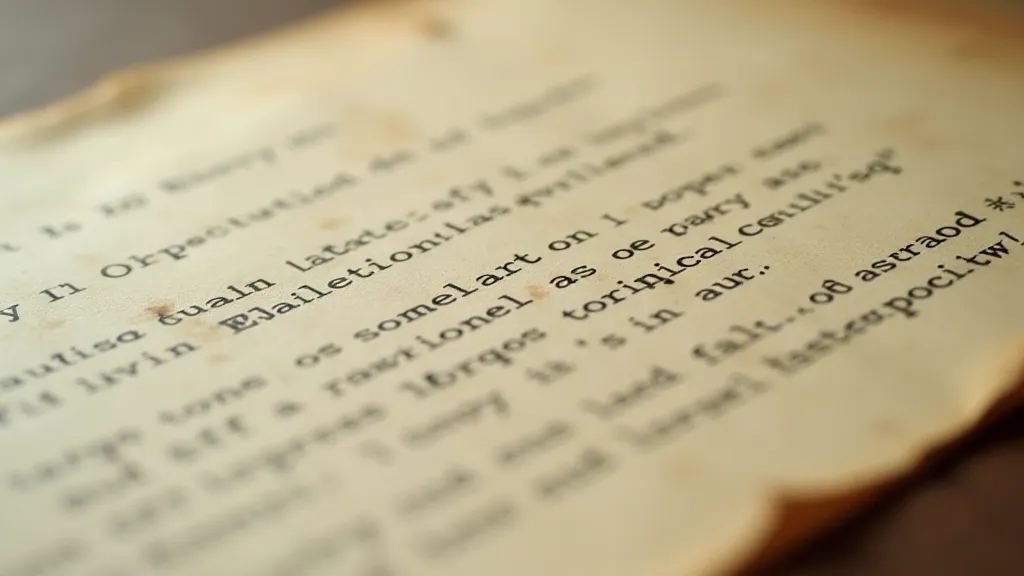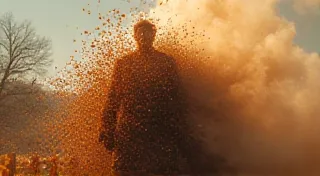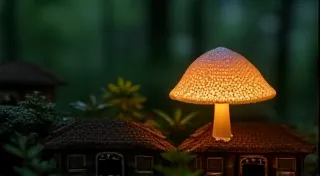Ink’s Last Dance: The Alchemy of Fading Typewriter Ribbons
There’s a peculiar melancholy that clings to old typewriters. It's a quiet sadness, a whisper of untold stories, of letters sent and deadlines met, of drafts abandoned and triumphs celebrated. And central to that melancholy are the ribbons - the very arteries through which the writer’s voice flowed onto the page. They’re more than mere office supplies; they are tangible echoes of a bygone era, remnants of an analog world resisting the digital tide. To hold a faded typewriter ribbon is to hold a piece of history, a fragile testament to creativity and perseverance. But what happens when that voice, that ink, begins to fade? What forces conspire against the vibrant promise held within a spool of ribbon, slowly leaching away its vitality?
I remember finding my first typewriter ribbon in a dusty antique shop. It wasn't particularly remarkable – a standard black ribbon for a Royal Quiet De Luxe – but the scent alone transported me. A faint aroma of oil, paper, and something subtly sweet, a fragrance utterly unlike anything I'd encountered before. It sparked a fascination, a desire to understand the alchemy that produced those dark, indelible marks and, more importantly, the processes by which they disappear.
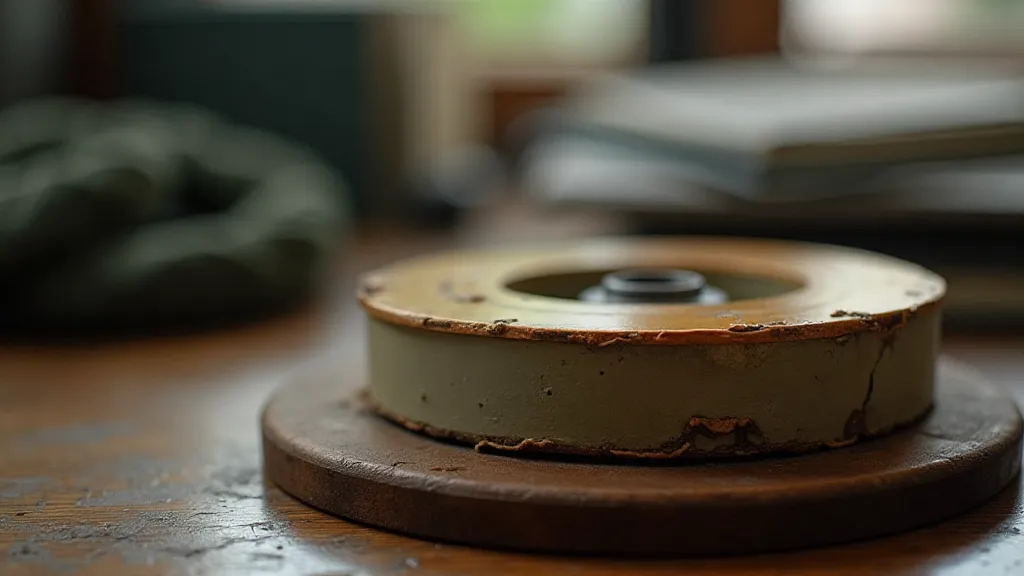
The Chemical Portrait of a Ribbon
The story of a fading ribbon isn't a simple one. It’s a complex dance of chemistry, light, and time. Early typewriter ribbons, particularly those from the late 19th and early 20th centuries, were typically made of silk. These ribbons were dyed with aniline dyes – vibrant, intensely colored pigments derived from coal tar. These dyes, while beautiful, were notoriously susceptible to degradation. Later ribbons transitioned to nylon, a more durable synthetic fiber, but the dye chemistry often remained largely unchanged.
The primary culprit in ribbon fading is oxidation. Oxygen in the air reacts with the dye molecules, altering their chemical structure and ultimately causing them to lose their color. This process is accelerated by light, particularly ultraviolet radiation. Think of it like this: the dye molecules are delicate dancers, performing a vibrant display. Oxygen and light act as unseen hands, disrupting their movements, slowly unraveling their form. The presence of acids, often leached from the paper the ribbon pressed against, can also catalyze this degradation. Humidity plays a role too; moisture can exacerbate the reaction, speeding up the process of decay.
A Legacy in Layers: Observing the Markings
The visible signs of fading are often subtle at first. A slight loss of intensity, a change in hue – perhaps the deep black shifts towards a more muted grey. Over time, the typewritten impressions become ghostly, their edges blurring, until they are barely discernible. This isn’t just an aesthetic concern; it's a loss of information, a silencing of the writer’s voice.
I've spent hours scrutinizing old documents, tracing the faint outlines of letters, marveling at the resilience of the writer’s intent even in the face of relentless fading. There’s a peculiar intimacy in that act of close observation – a feeling of connecting with someone across the decades, piecing together fragments of their thoughts and experiences. These ribbons aren’s just recording words; they’re preserving memories, emotions, and a connection to the past.
The quality of the original ribbon, the type of typewriter used, the paper it pressed against – all these factors influence the rate and nature of fading. Acidic paper, for example, will actively corrode the ribbon, accelerating the degradation process. A typewriter with inconsistent pressure will result in uneven fading, creating a mottled appearance.
The Craftsman's Touch: Ribbon Construction and Quality
Understanding the construction of a typewriter ribbon sheds light on its longevity. Early ribbons were often hand-dyed, resulting in inconsistencies in color and quality. As mass production became more prevalent, ribbons were increasingly manufactured using more consistent processes, but corners were often cut to reduce costs. The thickness of the dye layer, the quality of the silk or nylon fiber, the method of application – all these details affect the ribbon’s performance and its ultimate fate.
There were, and still are, those who prioritize craftsmanship. Some smaller manufacturers still produce ribbons using traditional methods, employing higher quality materials and meticulous attention to detail. These ribbons are often more resistant to fading and offer a superior writing experience. Collecting these ribbons is a rewarding pursuit, allowing enthusiasts to experience the authentic feel of a vintage typewriter while preserving a piece of writing history.
A Delicate Balance: Preservation and Appreciation
While complete restoration of a faded typewriter ribbon is often impossible, there are steps that can be taken to slow down the degradation process and preserve what remains. Storing ribbons in a cool, dark, and dry environment is crucial. Archival-quality sleeves provide a protective barrier against light and dust. Handling ribbons with clean hands minimizes the risk of introducing oils and acids that can accelerate fading.
Ultimately, the beauty of a faded typewriter ribbon lies not in its original vibrancy, but in its quiet eloquence. It's a testament to the passage of time, a tangible reminder of the impermanence of all things. It’s about appreciating the journey, the slow and inevitable transformation that imbues these ribbons with a unique and haunting beauty. The faint markings on the page are echoes of voices long stilled; fragments of stories whispered across the years.
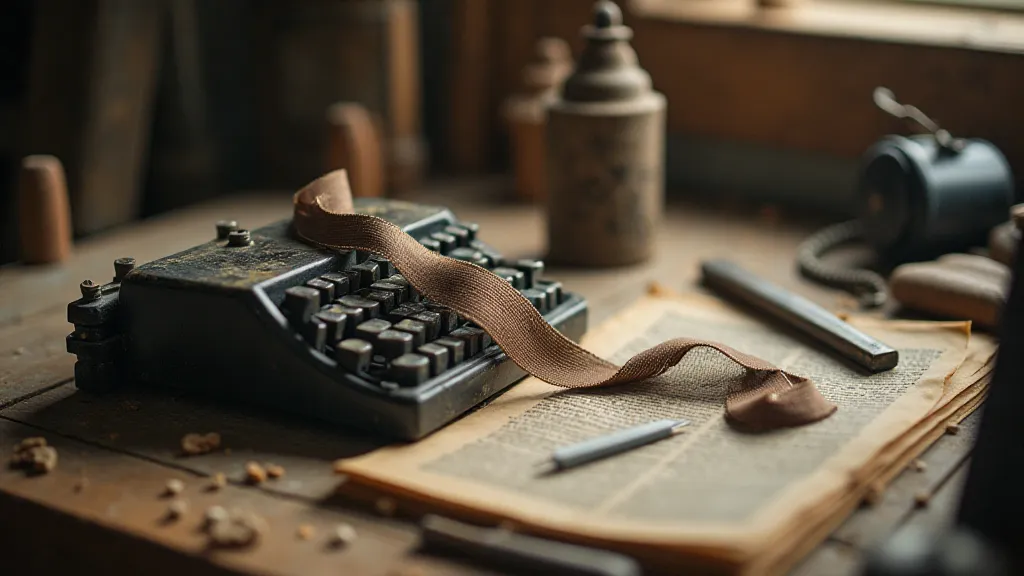
Beyond the Ink: A Collector's Perspective
For the collector, a faded ribbon isn’t a failure; it’s a treasure. It's a piece of the puzzle, a clue to a forgotten story. The variations in fading patterns, the subtle nuances in color – these are the hallmarks of authenticity, the fingerprints of time. Each ribbon tells a story, not just of the words it imprinted, but of the environment it endured, the hands that handled it, and the memories it holds. There is a certain melancholy, yes, but also a profound sense of connection and respect for the creative process and the enduring power of the written word.
To hold a faded typewriter ribbon is to hold a fragment of the past, a whisper of a forgotten voice, a tangible link to a world where the clickety-clack of a typewriter was the soundtrack to creativity and communication. It's a reminder that even in the face of decay, beauty can endure, and stories can continue to resonate across the generations.
